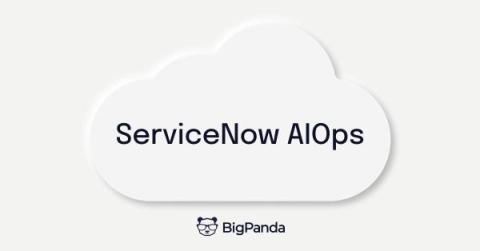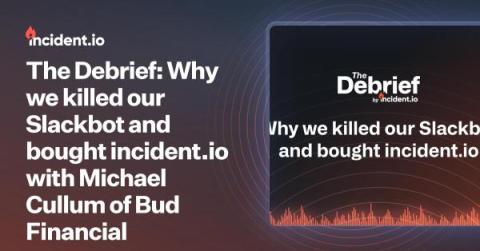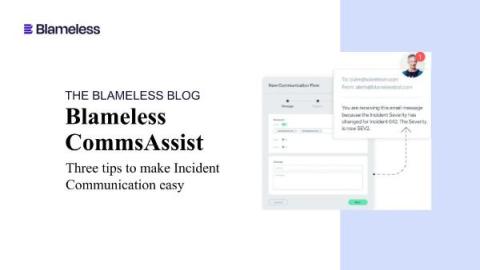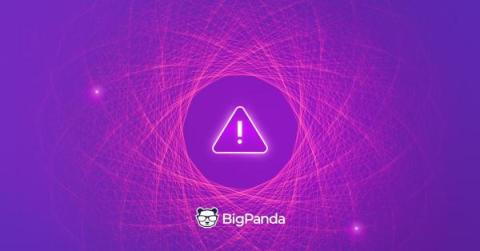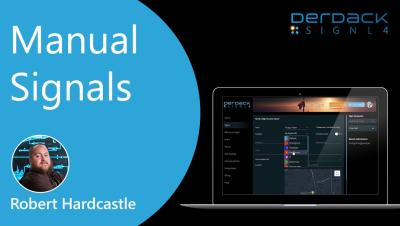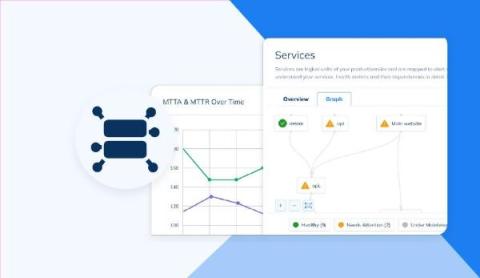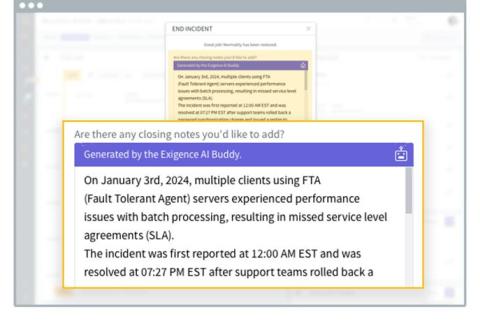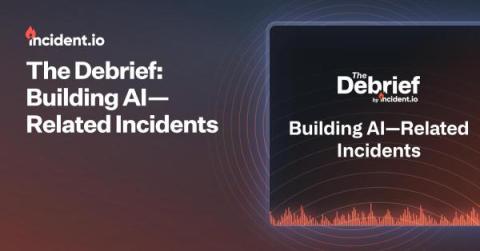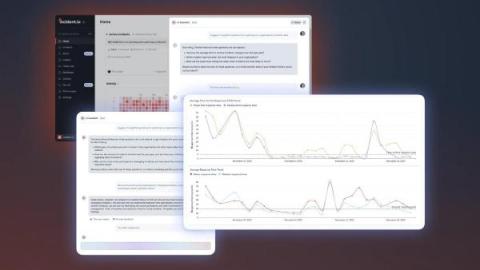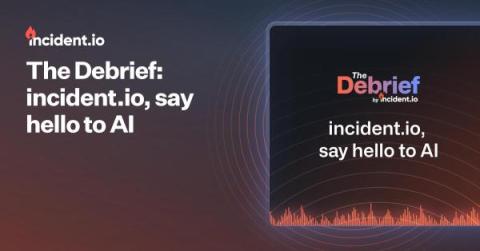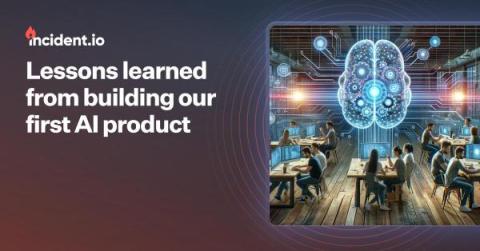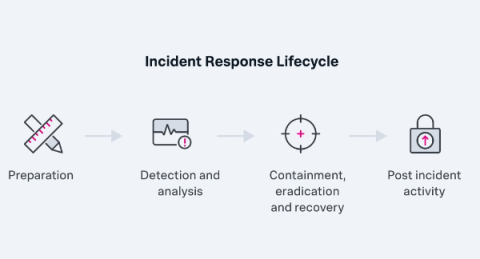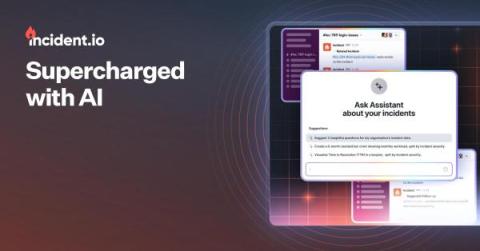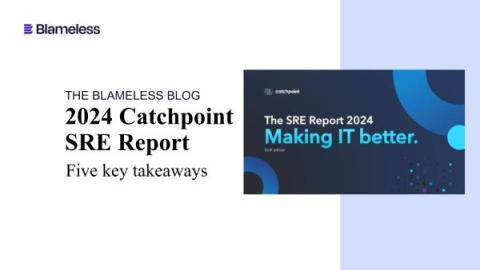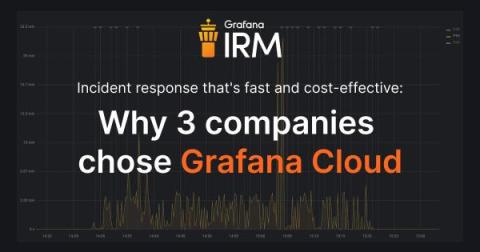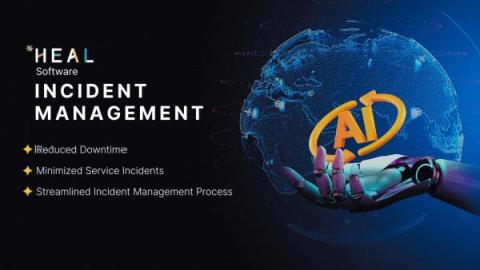Operations | Monitoring | ITSM | DevOps | Cloud
January 2024
Cloud Cost Incidents: Catching Cost Calamities on Time
What is ServiceNow AIOps?
A practical approach to on-call compensation
What is Alert Fatigue in DevOps and How to Combat It With the Help of ilert
Enhancing Service Reliability: Uniting Rootly's Incident Management and Backstage's Software Catalog
Chaos To Control: Incident Management Process, Best Practices And Steps
The Pulse Of Technology: Why IT Monitoring Is Non-Negotiable In 2024
Fireside Series: The secret to being a successful change agent in IT Operations
Top 5 Best PagerDuty Alternatives in 2024
System Reliability Metrics: A Comparative Guide to MTTR, MTBF, MTTD, and MTTF
The Debrief: Why we killed our Slackbot and bought incident.io with Michael Cullum of Bud Financial
Reducing The Impact of IT Incidents
When it comes to IT Downtime...you are not alone.
APAC Retrospective: Learnings from a Year of Tech Outages: Reactive to Proactive
Reliability At Your Fingertips | Squadcast
Create Follow the sun Oncall model
How Organizations Hire SRE's- Laterals or Internal?
TM710344: IT Admins Scramble to Identify Source of Microsoft Teams Incident
Role of Human Oversight in AI-Driven Incident Management and SRE
Blameless CommsAssist - 3 Tips on Making Incident Communication Easy
Accelerating Detection to Resolution: A Case Study in Internet Resilience
Discover the Sweet Spot : Offering Five Levels of Component Depth. (Short)
Did you know anyone can be affected by IT Downtime? (Short)
StatusCast : Conquer the Storm (Short)
StatusCast : Making IT Heroes! (Short)
Are you still using SMS for alerting?
How AIOps turns anomaly detection into faster incident resolution
Sending a manual Alert in SIGNL4
How Squadcast Helps With Flapping Alerts
Top 5 AIOps predictions for 2024
Discover the Sweet Spot : Offering Five Levels of Component Depth.
Did you know anyone can be affected by IT Downtime?
Simplifying Service Dependency With Squadcast's Service Graph
Navigating Challenges with Precision: A Guide to Remote Incident Response for Data Center Operations Managers
Mastering Remote Management and Monitoring: A Guide for Data Center Operations Managers
Safeguarding Operations: A Comprehensive Guide to Disaster Recovery and Business Continuity for Data Center Managers
Use ilert support hours
New! incident summary automation with generative AI
The Debrief: Building AI-Related Incidents
APAC Retrospective: Learnings from a Year of Tech Outages, Restore: Repair vs Root Cause
Finding relationships in your data with embeddings
5 Cloud Outages Tracker Tools To Monitor Vendors in 2024
Building a GPT-style Assistant for historical incident analysis
The Debrief: incident.io, say hello to AI
Terraform Time | Distribute PagerDuty config utilising Terraform Remote State
The alert fatigue dilemma: A call for change in how we manage on-call
Once the unsung heroes of the digital realm, engineers are now caught in a cycle of perpetual interruptions thanks to alerting systems that haven't kept pace with evolving needs. A constant stream of notifications has turned on-call duty into a source of frustration, stress, and poor work-life balance. In 2021, 83% percent of software engineers surveyed reported feelings of burnout from high workloads, inefficient processes, and unclear goals and targets.
StatusCast : Conquer the Storm
From Amazon to Apple: Key Strategies for Operational Excellence in Tech
Event-Driven Automation Panel
Lessons learned from building our first AI product
Does Every Incident Need a Retrospective? Here's What the Experts Have to Say
Every quarter, we host a roundtable discussion centered around the challenges encountered by incident responders at the world’s leading organizations. These discussions are lightly facilitated and vendor-agnostic, with a carefully curated group of experts. Everyone brings their own unique perspective and experience to the group as we dive deep into the real-world challenges incident responders are facing today.
Never miss machines malfunctioning with ilert integration for Tulip
Downtime costs money. That's why an effective incident management system is crucial. We're excited to announce our new partnership with Tulip to help manufacturers manage incidents better. This integration is an important advancement for complex production processes that require an in-depth operational strategy.
Mastering incident resolution through Root Cause Changes
Discover a new way to handle incident resolution with our Root Cause Changes (RCC) feature. This tool optimizes incident management by linking incidents with relevant changes, resulting in a significant reduction in resolution time and an overall improvement in operational efficiency. Explore the world of incident resolution with our advanced RCC feature and unlock its benefits.
Incident Response Plans: The Complete Guide To Creating & Maintaining IRPs
8 Strategies for Reducing Alert Fatigue
Site Reliability Engineers (SREs) and DevOps teams often deal with alert fatigue. It's like when you get too alert that it's hard to keep up, making it tougher to respond quickly and adding extra stress to the current responsibilities. According to a study, 62% of participants noted that alert fatigue played a role in employee turnover, while 60% reported that it resulted in internal conflicts within their organization.
Supercharged with AI
Empowering your AIOps journey: Rediscovering the power of BigPanda University
We hope this message finds you well in your start to 2024. As pioneers in the field of AIOps, we understand that the landscape is ever-evolving, and staying ahead requires continuous learning. That’s why we’re thrilled to remind you of a particularly invaluable resource at your fingertips—BigPanda University.
The Catchpoint 2024 SRE Report - Five Key Takeaways
Ultima Release - xMatters
APAC Retrospective: Learnings from a Year of Tech Outages - Dismantling Knowledge Silos
As our exploration through 2023 continues from the second blog segment, “Mobilise: From Signal to Action”, one undeniable fact persists: Incidents are an unavoidable reality for organisations, irrespective of their industry or size. In the APAC region, a surge in regulatory enforcement has been observed against large corporations failing to meet service standards, resulting in severe penalties.
Mastering IT Alerting: A Short Guide for DevOps Engineers
$575 million was the cost of a huge IT incident that hit Equifax, one of the largest credit reporting agencies in the U.S. In September 2017, Equifax announced a data breach that impacted approximately 147 million consumers. The breach occurred due to a vulnerability in the Apache Struts web application framework, which Equifax failed to patch in time. This vulnerability allowed hackers to access the company's systems and exfiltrate sensitive data.
Debugging Go compiler performance in a large codebase
As we’ve talked about before, our app is a monolith: all our backend code lives together and gets compiled into a single binary. One of the reasons I prefer monolithic architectures is that they make it much easier to focus on shipping features without having to spend much time thinking about where code should live and how to get all the data you need together quickly. However, I’m not going to claim there aren’t disadvantages too. One of those is compile times.
Tech is Easy, People are Hard - Incidentally Reliable with Suresh Kumar Khemka(Head of Infra @apna)
A New Approach To Incident Management
In recent years, IT departments have faced the challenge of adapting to an evolving landscape of demands. While the primary focus of traditional incident management solutions has been to reduce downtime, it's become clear that just reducing the amount of downtime isn’t sufficient. To truly mitigate the total impact of downtime, there must be a focus on reducing the damage and costs that accumulate while you are down.
Non-Abstract Large System Design (NALSD): The Ultimate Guide
Non-Abstract Large System Design (NALSD) is an approach where intricate systems are crafted with precision and purpose. It holds particular importance for Site Reliability Engineers (SREs) due to its inherent alignment with the core principles and goals of SRE practices. It improves the reliability of systems, allows for scalable architectures, optimizes performance, encourages fault tolerance, streamlines the processes of monitoring and debugging, and enables efficient incident response.
Navigating AI in SOC
With notable advancements in Artificial Intelligence (AI) within cybersecurity, the prospect of a fully automated Security Operations Center (SOC) driven by AI is no longer a distant notion. This paradigm shift not only promises accelerated incident response times and a limited blast radius but also transforms the perception of cybersecurity from a deterrent to that of an innovation enabler.
Incident response that's fast and cost-effective: Why 3 companies chose Grafana Cloud
When an incident occurs, every second counts. On-call staff need to quickly get all the relevant information in front of them in a way that’s easy to digest so they can more successfully investigate the issue and communicate with relevant stakeholders.
Downtime Can Affect Anyone : Tired of Hearing "Are You Down"?
The Unplanned Show, Episode 25: Learning from incidents with Nora Jones
11 Best Incident Management Software in 2024
Discover the Sweet Spot : Offering Five Levels of Component Depth
Modernize your ITSM with the New PagerDuty Application for ServiceNow
We live in an always-on world, where things move fast and break often. Building stronger resilience is critical for operational efficiency and delivering great customer experiences. CIOs have heavily invested in ITSM solutions, but a centralized, queued approach is no longer meeting the needs of modern organizations when it comes to critical, customer-impacting issues.
Predictions for 2024 - Learn from PagerDuty's CIO and CISO!
How to optimize your cloud infrastructure management
As on-premises infrastructure and workloads increasingly migrate to the cloud, you’ve undoubtedly encountered many challenges in managing complex cloud architectures. These hurdles include juggling cost-efficiency and security to maintain a seamless, high-performance infrastructure. Navigating your cloud infrastructure landscape requires thoroughly understanding its virtualized elements—servers, software, network devices, and storage.
The All-New OnPage Phone App (Light mode)
Introducing Squadcast's Intelligent Alert Grouping and Snooze Notifications
How to take someone else's on-call shift in ilert
8 Incident Management Tools You Need To Consider In 2024
How Squadcast's Workflows Enhance Incident Management Automation?
A recap of 2023
Last year we decided to just keep our heads down and continue working on a good reliable product #bootstrapped. Most features we built were based on your feedback. Thank you so much. 2024 is going to be great but before that let's glance on the year gone.
Unlocking the Value of your Runbook Automation Value Metrics with Snowflake, Jupyter Notebooks, and Python
This blog was co-authored by Justyn Roberts, Senior Solutions Consultant, PagerDuty Automation has become an integral piece in business practices of the modern organization. Oftentimes when folks hear “automation,” they think of it as a means to remove the manual aspect of the work and speed up the process; however, what lacks the spotlight is the value and return automation can offer to an organization, a team, or even just one specific process.
How to Calculate and Minimize Downtime Costs
Downtime is an unwelcome reality. But, beyond the immediate disruption, outages carry a significant financial burden, impacting revenue, customer satisfaction, and brand reputation. For SREs and IT professionals, understanding the cost of downtime is crucial to mitigating its impact and building a more resilient infrastructure.
How to choose incident management software and tools
Developing a proficient ITOps practice capable of handling unforeseen disruptions and mitigating negative business impact hinges on mastering optimal incident management. Beyond adhering to best practices and procedures, a critical aspect is making strategic investments in cutting-edge incident management software and tools. These tools empower your team by automating real-time monitoring and analysis, bolstering the resilience and capabilities of your IT system.
Terraform Time - Opening 2024 with PagerDuty via Terraform
Navigating the Transition to Secure Texting
Recently, I stumbled upon an eye-opening NPR podcast that delved into the lingering use of pagers in healthcare—a seemingly outdated technology that continues to drive communication in hospitals. As I listened through the debate around its persistence, discussing challenges and unexpected benefits, it prompted reflections on facilitating a seamless shift to secure phone-app-based texting, acknowledging the considerable advantages it brings.
How HEAL Can Help You Manage Service Incidents Better
Service incidents are unavoidable in today’s complex and dynamic IT environments. They can cause significant disruption to business operations, customer satisfaction, and revenue. However, many organizations are still struggling to manage service incidents effectively. Here, we will explore some of the common challenges faced by ITOps team and how HEAL, an AI-powered tool, can help conquer them.
APAC Retrospective, Part 2: Mobilise: From Signal to Action
Continuing our series on 2023 learnings from APAC, it’s increasingly evident that incidents in organisations are not a matter of ‘if’ but ‘when,’ regardless of their size or industry. Recently, the APAC region has been witnessing regulatory bodies taking stricter actions against major companies for subpar services, leading to substantial penalties.
What's the difference between an event vs alert vs incident in IT operations?
Are you confused by the difference between events, alerts and incidents in IT operations? It’s easy to get mixed up when you’re getting started in IT operations because of these concepts’ overlapping nature and interconnectivity. However, it’s important to know the differences so you can accurately categorize and respond to various IT issues and ensure resources are allocated effectively.
Practitioners Share How They Remove the Fear of On-Call
Being on-call isn’t likely to be the most enjoyable aspect of a job. In fact, there might be a certain level of stress and fear around engineering teams about going on call: maybe the page will be missed, or maybe a page will come in at 2am and require troubleshooting a production issue for hours.
Improving Beyond MTTR with PagerDuty Analytics
We’ve posted a bit about the ambiguity around MTTR before, but we want to get deeper into the confusion and maybe false sense of security our reliance on MTTR causes, from both a qualitative and quantitative standpoint.
8 Best IT Monitoring Tools and Software of 2024 (Updated)
Monitoring tools, also known as observability solutions, are designed to track the status of critical IT applications, networks, infrastructures, websites and more. The best IT monitoring tools quickly detect problems in resources and alert the right respondents to resolve critical issues. Response teams use observability solutions to gain real-time insights into resource availability, stability and performance.




